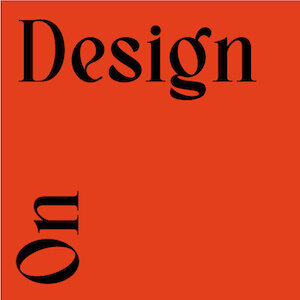Marcus Fairs on Dezeen and finding your calling
My conversation with Marcus Fairs, founder and editor-in-chief of Dezeen, was so much more than I expected. I knew we’d discuss the early days of Dezeen and hoped for interesting information about the ins and outs of running a successful online business. But we also delved into Marcus’s personal story and his encouraging thoughts on finding your calling and turning adversity into success.
In his own words, Marcus was “a confused young person”, good at many things—including science and maths—but not excelling in any particular field. Against his teachers’ wishes, he rejected the idea of studying Latin at Oxbridge. Further searching for his calling eventually led him to enrol at art school where he finally found his “type of people and the environment”; but art itself was too conceptual for his scientific mind. He then decided to pursue 3D Design studies but didn’t get on with the subject, teachers or fellow students.
Fast forward a few years and he was living in Spain, teaching English, approaching 30, yet still without a defined career path. Although he was tempted by the idea of leading a nomadic life in South America, he eventually decided to come back to the UK to “become a writer”. He enrolled on a postgraduate journalism course at the London College of Printing and that’s when the story of his success really begins. Marcus recognised journalism as his true calling, excelled throughout the course and before he knew it, joined Building Design magazine as a freelance architecture writer.
Whilst in that role he was headhunted to launch ICON Magazine, from which—after three successful years—he got fired, as his first book hit the bookstores without the magazine publisher’s knowledge. Surprisingly he didn’t see it as a failure but as a relief. It was an opportunity which allowed him to start Dezeen, at a time when design and architecture journalism didn’t exist online.
Marcus’s vision from the early days of Dezeen was to quickly establish it as an international brand. With new stories published daily—often breaking the news ahead of print magazine’s long lead times—Dezeen was quickly gathering a following. But it was a chance dinner party meeting with Kanye West in Miami, and scooping exclusive renders of his Claudio Sylvestrin designed Manhattan apartment, that made Dezeen go viral. The design and architecture industry started to pay attention.
As our conversation progresses, I’m waiting for Marcus to share a hack, a trick, a piece of software or hidden investor that made Dezeen the world’s most popular architecture and design website. There’s no sign of it, though, as Marcus explains that all he needed was a good name, a good website and a good product. In Dezeen’s case that was online journalism; “I’m more of a believer in journalism, than I am in architecture and design, to be honest.”
The business never had external investment or borrowed money. To date, the funds have come from revenue—initially generated by online advertising and hosting talks. Now Dezeen has a fledging in-house video studio delivering the largest chunk of the income, supported by recruitment site Dezeen Jobs and Dezeen Awards which launched last year.
Dezeen was one of the first online magazines for design and architecture when it launched in 2006. But how does Marcus future-proof the business in an era when competitors can appear overnight?
His answer is to turn the Dezeen brand into an ecosystem of ‘useful things’, with digital information at its heart—whether that’s editorial, recruitment or awards. He plans to do this by establishing free Dezeen membership which will deepen the relationship with the website’s users. What are the current business threats on his radar? He points out to the influencers who are disrupting the industry with their paid-for appearances at press events and immediate and personal coverage of new launches and openings.
Whilst Marcus is concerned with protecting and growing his business, he’s on a bigger mission too. He wants to foster investigative journalism which promotes the architecture and design industries’ contribution to tackling global crises in terms of climate change, politics, refugees—the list goes on. He’s determined to do this democratically, for every big and small design studio, and for every gender and race to have equal say on the matter of where our world is headed.
A mission which I’m sure we can all relate too.
__
Listen to the On Design podcast now on iTunes, Spotify and Google Podcasts.
Presented and produced by Justyna Green - follow Justyna on Instagram.
Music by James Green






